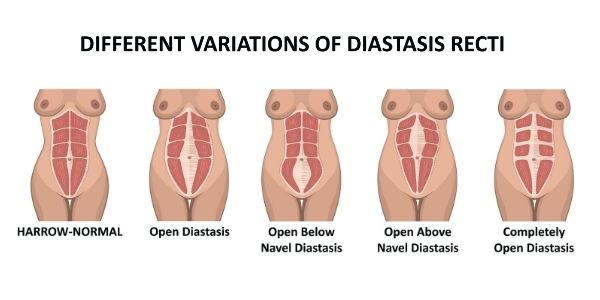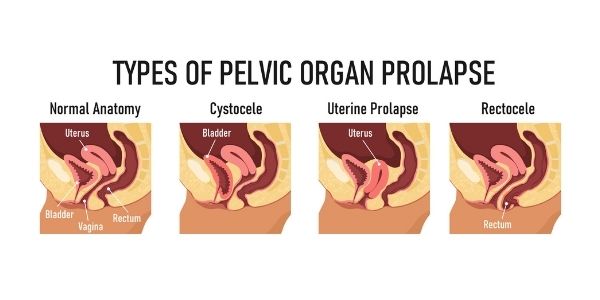Pelvic-perineal dysfunctions, are the most common diseases in postpartum women[i], and yet postpartum pelvic health is generally not recommended or discussed as part of standard care in Canada. Postpartum is generally defined as beginning immediately after the birth of a child. The truth is once you deliver a child you are ‘postpartum’ for the rest of your life. But for too many women, recovery from childbirth is also lifelong when it doesn’t have to be.
In France, seeing a pelvic physiotherapist post-partum is the standard of care. Ob-gyns prescribe postpartum women 10-20 sessions of pelvic physical rehab and it is covered as part of the country’s government health care plan.
Unfortunately, this is not the case in Canada, or the U.S., where there is a shocking lack of education and awareness around pelvic floor dysfunction and its impact on quality of life and health related economics.
It is time to give all women access to postpartum pelvic health care and optimal pelvic function. Below are five reasons why every woman should see a pelvic physio postpartum and it should become the standard of care!
5 Reasons Postpartum Pelvic Health Should be Standard Care
1. Correct a Diastasis Recti and Improve Your Core Strength
The actual term for ‘mummy tummy’ is diastasis recti, or diastasis rectus abdominis (DRA), which occurs when the abdominal muscles become stretched. This will happen with pregnancy, as our stomachs need to expand to make way for a growing baby.
The stretching only becomes problematic when the muscles do not ‘re-tension’ to improve the muscle and tissue laxity post-partum. The lack of muscle tension between the abs can cause core weakness and lower back pain, amongst other symptoms.

Diastasis recti is very common. One study found that the prevalence of DRA was 60.0% at 6 weeks, 45.4% at 6 months, and 32.6%, at 12 months postpartum.[ii]
Pelvic floor physiotherapy can help to assess a DRA, and assist in improving your inner core function so you can get back to pain free activities and your pre-baby exercises with a strong and functional core!
2. Reduce Pain or Discomfort with Intercourse
Sex is never supposed to hurt. And if it does, this pain should not be ignored. Yet painful sex is a frustrating reality for many women after giving birth. 85.7% experience pain with penetrative intercourse at first attempt after vaginal or caesarian birth. And, 22% of women continue to have painful intercourse beyond 18mo post-partum (McDonald et al, 2016).
Tearing can occur during the birthing process, leading to scar tissue build up, and potential tightening or protecting of the pelvic floor muscles. Pain can be at the entrance, or with deep penetration. But regardless of where it is felt, it can be treated with pelvic physiotherapy.
A pelvic physiotherapist can assess the reason for painful intercourse and help to reduce the tone in the pelvic floor muscles by releasing scar tissue to help you get back to enjoying intimacy to its fullest.
3. Stop Leakage
Leakage is very common post-partum. In fact, 33% of women experience urinary incontinence in the first three months postpartum. (Thom and Rortveit 2010) Leakage can occur due to the pregnancy itself or trauma that has occurred with either a vaginal delivery and/or C-section
Many women accept leaking pee when they cough or sneeze, needing to run with an absorbent pad, or leaking on the way to the toilet, as a normal part of life after childbirth. But leakage should never be allowed to keep happening Because it is 100% treatable.
Leakage occurs due the stretching and accompanying pressure of the pelvic floor muscles, ligaments and other tissues surrounding the bladder and urethra that follows childbirth. A pelvic floor physiotherapist can cure any leakage with a personalized treatment plan based on the findings in your consultation and examination.
Many women might be surprised to learn that Kegels are not the answer for everyone. In fact, they are often performed incorrectly, in which case they don’t even work. If they are part of the right treatment for your leakage issue, a pelvic floor physiotherapist can make sure you are performing them correctly and getting the most out of your efforts.
4. Treat or Prevent the Pelvic Organ Prolapse
The trauma on the pelvic floor due to carrying and then delivering your baby can cause a pelvic organ prolapse (POP). This is basically when your organs start to descend down into your vagina… and no this is not a joke, it happens often! Fifty percent of parous women have some degree of symptomatic or asymptomatic POP (Hagen & Stark 2011).

Many women are actually unaware they have a prolapse, often until they begin to feel symptoms such as a bulging out through their vagina. If left untreated, the prolapse can descend further down and in severe cases obstruct kidney function and urinary retention.
A pelvic floor physiotherapist can identify whether you have a prolapse, and create a personalized physiotherapy plan to improve it.
5. Before Getting Back to Exercise
Even if you don’t believe you have any of the above issues, pelvic physiotherapy should be your first stop prior to getting back to exercise post-partum. Especially before beginning any ‘core’ or abdominal exercises. This is because your pelvic floor muscles are actually part of your inner core unit. The inner core unit is a group of muscles around the spine and pelvis that help to provide dynamic stability as you move.
The pelvic floor works in conjunction with the rest of your ‘core’, and requires the participation of the rest of those muscles for proper functioning. Performing exercises that are inappropriate for you, can further increase the risk of injury, or the chance of pelvic floor dysfunction.
Postpartum physical activity can improve mood, maintain cardiorespiratory fitness, improve weight control, promote weight loss, and reduce depression and anxiety. [iii] But the appropriate time to begin or resume physical activity after child birth is different for every woman. That is why it is important to get your pelvic floor assessed and to be educated on what to look for to ensure you are ready to return to all exercise post-partum.
Postpartum Pelvic Health at Propel Physiotherapy
At Propel Physiotherapy, our pelvic floor physiotherapists assess and treat women with pelvic dysfunction resulting from pregnancy and childbirth. After an initial consultation and examination, your physiotherapist will work with you to develop a customized plan based on your specific needs and goals.
Contact us to find out how we can help you get back to the best possible pelvic function and management of your bladder, bowel and reproductive organs.
References
[i] Fonti Y, Giordano R, Cacciatore A, Romano M, La Rosa B. Post partum pelvic floor changes. J Prenat Med. 2009;3(4):57-59.
[ii] Sperstad JB, Tennfjord MK, Hilde G, Ellström-Engh M, Bø K. Diastasis recti abdominis during pregnancy and 12 months after childbirth: prevalence, risk factors and report of lumbopelvic pain. Br J Sports Med. 2016;50(17):1092-1096. doi:10.1136/bjsports-2016-096065
[iii] Evenson KR, Mottola MF, Owe KM, Rousham EK, Brown WJ. Summary of international guidelines for physical activity after pregnancy. Obstet Gynecol Surv. 2014;69(7):407-414. doi:10.1097/OGX.0000000000000077
Written by











